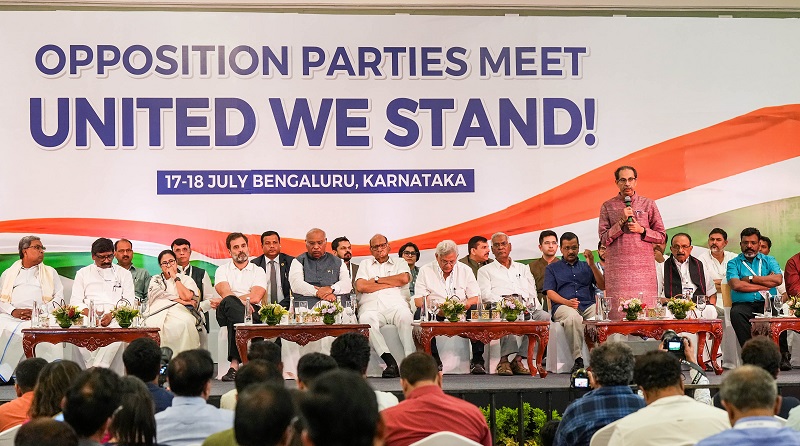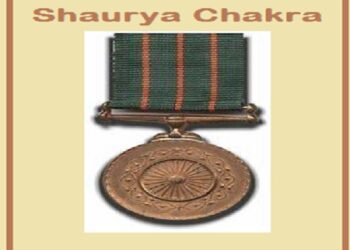
After being in the works for over a year, Opposition unity has finally materialized in India. INDIA, as the grouping of more than a dozen parties calls itself, has already held a couple of successful meetings. And on paper, the alliance is shaping up to be a credible challenger to the ruling BJP. It comprises a diverse array of regional and national parties, which have historically been rivals but have set aside their differences for a common cause: to take on the BJP’s nationalist platform, which appears now more entrenched than ever in its reign of the past nine years.
As the INDIA grouping moves forward, it plans to create a coordination panel and name a convenor to further streamline its efforts. One challenge the alliance will face is deciding on the allocation of seats for each party to contest one-on-one against the BJP. A successful seat-sharing will be critical in maximizing their chances of victory in the national elections. Would parties be able to work out this complicated arrangement? The coming weeks and months will make things clear on this score.
That said, seat-sharing will be a technocratic process guided by the electoral arithmetic. Each party is likely to get seats equivalent to a measure of its popularity and geographical footprint based on its performance in the last election. The exercise will understandably be a big hurdle to surmount.for the newly-launched alliance and as such will be a test of its strength. In fact, the real challenge for the BJP will begin only after this exercise is carried out smoothly.
Comprising 26 parties, the INDIA has some formidable regional parties apart from the national party like Congress. More worrying for the BJP is the resurgence of the Congress following Rahul Gandhi’s 4000 kilometre padyatra,which ended in Srinagar this year. Ever since Congress has won Himachal Pradesh and Karnataka which shows it might finally be getting back into public favour. However, the outcome of the upcoming Assembly elections will make things further clear. Around nine such polls are scheduled to be held before the national polls. Among them, the elections in Chhattisgarh, Madhya Pradesh, Rajasthan and Telengana will be very consequential. The BJP will hope to win all of them. Should the party suffer reverses in the majority of these states, this may not bode well for its 2024 chances. But despite the reverses, it could still carry the day as happened in 2019 when the saffron party secured a landslide in general elections despite losing state polls in Madhya Pradesh, Karnataka and Rajasthan.
The elections in these major states represent the last chance for the opposition, especially Congress, to hurtle back into the reckoning. For now, Congress can take heart from the victory in Himachal and Karnataka.
As for regional parties, the BJP is expected to face a tough fight from the TMC in West Bengal, JDU-RJD combine in Bihar, Samajwadi party in Uttar Pradesh, AAP in Delhi and Punjab, Maha Vikas Aghadi comprising Congress, Pawar’s NCP and Shiva Sena in Maharashtra, DMK in Tamil Nadu, Bharat Rashtra Samiti in Telangana and communists in Kerala. These are all very strong parties and if the INDIA alliance sticks together and ensures a one-on-one contest with the BJP, this is certain to make things difficult for the BJP, if not unmanageable.
Despite being in power for over nine years, the prime minister Narendra Modi remains very much the overarching, pan-India leader without even a distant competition from any other leader either within the BJP or in Opposition. True, the Uttar Pradesh Chief Minister Yogi Adityanath, with two successive terms under his belt, has become a darling of a section of Hindutva base and is thus being touted as a potential rival. But he is still far from matching the appeal of the PM Modi.
In the opposition, there is still no one who comes even close to Modi charisma. After yatra, Rahul Gandhi has certainly come a long way. He has shed his pappu image to a large extent. But he isn’t still there yet. As for his makeover, it still seems to be a work in progress. His statements are largely about some of the BJP’s governance failures, not about the overarching ideological challenge posed by the saffron party. Hence the persisting absence of a cogent political narrative from the Congress.
But the Karnataka win has certainly gone some way to boost his political cachet – albeit, the party’s performance in the state owes itself in major part to the efforts of its local leaders who harnessed deep anti-incumbency against the BJP to their advantage.
As for the regional parties, there is no leader with a pan-India appeal. But some of them like Mamata Banerjee, Nitish Kumar, Akhilesh Yadav, Arvind Kejriwal etc have a formidable following in their respective states. With Congress apparently on the rebound, 2024 is unlikely to be a walkover for the BJP the way 2019 was. That is, unless some election time crisis once again works to the advantage of the BJP. Perhaps in a nod to this evolving reality, the BJP has felt the need to dust off the NDA to take on the opposition’s INDIA.
Views expressed in the article are the author’s own and do not necessarily represent the editorial stance of Kashmir Observer
- The author is the Political Editor at Kashmir Observer
Follow this link to join our WhatsApp group: Join Now
Be Part of Quality Journalism |
Quality journalism takes a lot of time, money and hard work to produce and despite all the hardships we still do it. Our reporters and editors are working overtime in Kashmir and beyond to cover what you care about, break big stories, and expose injustices that can change lives. Today more people are reading Kashmir Observer than ever, but only a handful are paying while advertising revenues are falling fast. |
| ACT NOW |
| MONTHLY | Rs 100 | |
| YEARLY | Rs 1000 | |
| LIFETIME | Rs 10000 | |











